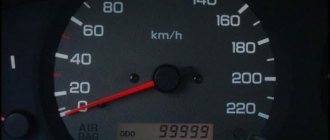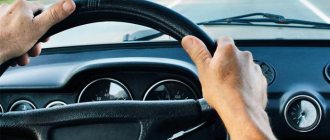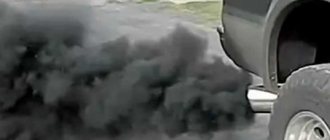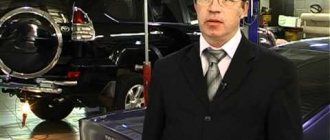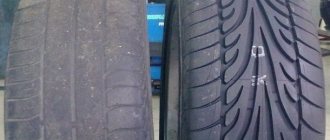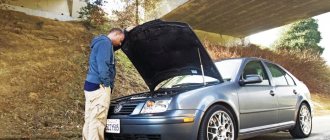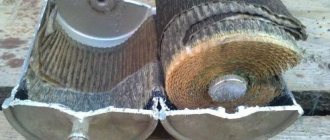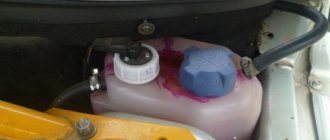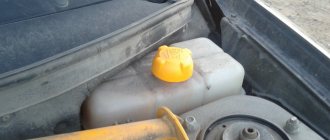Car tires, like any thing, have their own specific resource and strength threshold. Therefore, it is not surprising that with intensive use of the car, rapid wear of the rubber occurs. Wear can be observed on any axle and side of the car, where there is any malfunction or violation. The normal service life of tires is within 4-6 years, taking into account if the tires were used carefully and carefully throughout this period.
Today we will find out for what reasons rubber can be eaten? Here are the 5 most common reasons.
1. Wheel alignment.
Rubber eating can occur due to uneven placement of the wheels in relation to the body. Camber is responsible for the position of the wheel along the vertical axis, while toe is responsible for the placement of the wheels when entering a turn.
Why, if the indicators are incorrect, after a while it can begin to eat up rubber on all sides and on different wheels. For example, if wear is observed on the inside, it means that the angle has been tilted inward too much. This wheel position is called negative camber. Accordingly, if there is wear on the outside, then this is positive camber. This means the wheels are tilted in different directions. Also, if the camber is incorrect, the rubber can eat up on one wheel from the inside, and on the other from the outside.
Why do the wheel alignment settings get lost? There are several reasons:
• Lack of timely control, long-term operation of the vehicle on bad roads.
• Hitting a curb, a hole or other potholes or uneven surfaces.
• After repairing the suspension, replacing levers, silent blocks, steering tips, rods, etc.
• Wear of suspension elements.
• The reaction rods are bent, there is play in the bushings, etc.
• Bent bridges, the hull itself.
2. Low or high tire pressure.
When using wheels with low pressure, accelerated wear begins on the part of the tire that breaks and bends. At low pressure:
— the rim begins to press on the surface of the tire;
— the tire structure bends at the edges.
That is, it is clear that with insufficient pressure the side part often wears out, both on the inside and on the outside. If there is excess pressure, wear will be observed in the middle of the tire.
3. Uneven pressure.
A common reason for those motorists who do not monitor their car and tire pressure in general. Uneven tire pressure on one axle almost always leads to wear on one side or the other, depending on operating conditions. For example, on the right front wheel the pressure is 1.5 Ba, on the opposite one it is already 2.0 Ba. That is, there is a difference, which means uneven wear occurs. In such cases, the car often begins to “drive” in one direction, usually where there is less pressure. Rubber burns are also observed there.
4. Improper storage of tires in the summer or winter season . It is known that it is impossible to store tires one on top of the other, especially if they are stored with the rims on. Under weight pressure, the tires sag to one side. After a long period of lying in this position, the tires in most cases cannot be restored.
The correct method of storing tires involves installing the wheels on edge, that is, just as the wheels are on the car, they need to be stored. Scrolling periodically so as not to get caught. Or better yet, hang it up. If the tires are on rims, then you can lay them flat.
5. Aging, manufacturing defects.
Nowadays, it is rare to use tires beyond their expiration date; rubber, as a rule, becomes unusable earlier due to excessive use. But still, don’t dismiss this reason. Check if any cracks or pores have appeared on the rubber. Violation of tightness, all this directly affects the operation of the tires. When the rubber is damaged or the seal is broken, moisture gets inside, which over time leads to the destruction of the metal shell of the tire, the so-called cord.
Zigi › Blog › Types of tire wear and destruction
1. Failure to comply with the norms of internal air pressure in tires and their overload
2. Irregular maintenance and repair of tires
3. Violation of the rules for dismantling and mounting tires
4. Wheel imbalance
5. Malfunctions of the vehicle's chassis and steering
6. Overload (or underpressure) by 10% reduces mileage by 20%. One of the determining parameters when selecting tires is the maximum permissible load on the tire. It is recommended to use tires with a 10-15% margin for this indicator. Such tires will operate in more favorable conditions even with short-term overload.
7. Constant driving on gravel and crushed stone. On such roads, the wear rate is higher due to an increase in abrasive wear, which causes the formation of scratches, cracks, cuts, tears and tears in the tread rubber.
8. Frequent operation during prolonged driving on the highway at high speed. When driving for a long time at high speeds, tire deformation occurs more often. As a result of internal friction, energy is released, which is mainly converted into heat. There is intense heating of the rubber (especially in the summer). Friction on the road increases. An increase in temperature outside and inside the tire can lead not only to increased wear on the tread surface, but also to the occurrence of delaminations between tire parts. So, at a temperature of 120 degrees Celsius, the tensile strength of conventional rubber is reduced by 40%
9. Sports driving style (frequent and sharp acceleration and braking). An active driving style leads to the tread slipping in the contact patch, which significantly increases the wear rate, both during acceleration and braking. The higher the speed at which sudden braking begins, the more intense the wear. Prolonged emergency braking can lead to the formation of wear marks and even separation of tread elements.
Type of wear: 1 Rubber wear on both sides all around.
Cause: Tire pressure too low.
Type of wear: 2 Rubber wear in the middle along the entire perimeter. Cause: Tire pressure too high.
Reason: Incorrect adjustment of wheel alignment angles, as well as overcoming curved sections of the road at high speeds. In this case, to prevent further tire wear, rotate the tires on the rims or swap the front and rear wheels. Wear on the outer edges of the tire more than the center cross-section indicates that the vehicle has been driven for a long period of time with too low tire pressure.
Type of wear: 4 Abrasion in some places on the side of the working surface.
Reason: Lack of static and dynamic wheel balancing. There may be excessive lateral runout of the disc, too much play in the wheel bearings or suspension arm joints.
Reason: Lack of static wheel balancing. There may be excessive lateral runout of the rim.
Type of wear: 6 Heavy wear in some places in the middle of the working surface.
Cause: Consequences of wheel locking during sudden braking. It is also possible that the brake drum is oval shaped and is always in the same position when the wheels are locked.
Reason: Vehicle overload. Check the inside of the tire for cracks.
Wear Type: 8 There are sharp edges on one side of the front wheel.
Reason: Frequent driving on heavily broken road surfaces. Driving fast around corners.
Type of wear: 9 Frame base is torn. At first, this is only noticeable from the inside of the tire.
Reason: Driving on sharp stones, rail joints at high speed
"Bald spots" on the tire
If there are certain areas on a car tire that are more worn than the rest, they are usually called “bald spots” or spots.
Most often, such spots appear on the cars of drivers who like to accelerate and brake sharply. During rare (including emergency) braking, if the car does not have an ABS system, the wheels are blocked and the car slips on the tire along the road surface. Sliding leads to an increase in tire temperature and immediate wear. In addition, spots on your car's tires can appear if it sits idle for a long time. When parked for a long time, a separate section of the tire bears the entire weight of the car. Due to its structure, it can become deformed over time.
The main reasons for uneven tire tread wear
Car tires, like all parts in a car, have their own specific service life; as a rule, with careful use and normal quality, tires last from 4 to 6 years. But intensive premature wear of tires often occurs; as motorists say, it eats rubber. Tires can be “eaten” in different places on the tread; wheel wear occurs on both the front and rear axles.
It is not easy to say unequivocally why rapid tire wear occurs; sometimes it is difficult even for experienced drivers to find the reason. But in many cases, the “zhor” of tires indicates existing faults in the car that need to be corrected.
Excessive tread wear at edges
What it looks like: The inner and outer tread have increased wear, while the middle of the tread wears significantly less.
Cause: This is a sure sign of low tire pressure. That is, the pressure does not correspond to the standard recommended by the car manufacturer. Remember that insufficient tire pressure is the most dangerous condition of tires. The fact is that with reduced tire pressure, it is subject to greater bending. According to the laws of physics, this means that as the wheel rotates, the tire will accumulate more heat. As a result, the rubber will not adhere evenly to the road surface and, accordingly, we will get uneven tire wear.
Also, insufficient pressure in the tires will lead to the fact that the rubber will not sufficiently soften shocks on the road, which will naturally directly affect the suspension. Over time, this harsh impact on the suspension can lead to premature failure and also affect wheel alignment.
How to avoid the problem of under-inflated (insufficient pressure) tires: We again return to the fact that every driver should regularly check the air pressure in the wheels, that is, every month or every time after a sharp change in temperature outside. Also remember that cold tires (when parked at night) may show pressure lower than that recommended by the vehicle manufacturer. But during a long trip, due to heating of the air, the pressure may exceed the norm.
We also advise you not to rely on the electronic tire pressure warning system found in many modern cars.
The fact is that this system, as a rule, warns you about changes in tire pressure, either when there is a sharp fluctuation in pressure (for example, a sharp drop in tire pressure by more than 25 percent), or when the pressure drops significantly over a long period of time.
In other words, the tire pressure warning system can only operate when the tire pressure is significantly less than necessary. This means that you risk driving for long periods of time on wheels with insufficient air pressure. .
The main reasons why it eats rubber from the outside
Rubber on a car can be eaten both from the outside of the tread and from the inside; the main reasons for external intensive wear are:
- incorrect toe adjustment (the wheels are tilted in different directions more than they should be);
- the presence of play in steering rods and tips;
- factory defect of tires;
- high speed when cornering;
- insufficient tire pressure.
As a rule, when the outer part of the tread is intensively eaten away, the rubber emits an unpleasant squeak when entering turns. On many passenger cars, the tires on the front axle wear out first, since “burning” occurs when braking, and the load mainly falls on the front disc brakes.
Also, a hernia may appear on the outer side wall of the rubber, which occurs as a result of a side impact or falling into a hole on the road. It should be noted that a bulge on the tire does not always appear immediately; a hernia may be detected only after a week or even later. Cracks on the outside of a tire most often appear for two reasons:
- the car has been operated for a long time with low tire pressure;
- The tires have exhausted their service life, it’s time to replace them with new ones.
Another option is uneven wear on the outer part of the tread along the radius; some kind of bumps appear on it. The main reason for the occurrence of such a defect is a faulty suspension; broken shock absorbers are primarily to blame for this.
Long-term diagonal dent and severe tread wear
This problem is relevant for the rear axle of a front-wheel drive car.
Most often it occurs when a passenger car is operated in cargo mode, that is, it often transports weights for which it is not designed. Taxi drivers can also often experience a similar problem. If the car is not used as a means of constantly transporting heavy loads, but at the same time it has a similar problem, the reason for this is incorrect alignment. As a result, before installing new tires on a car, it is necessary to check the wheel alignment and set it to zero.
Eats rubber from the inside on VAZ-2101-07 cars
On any car, the tread on those wheels that are driving wears out first, so on all rear-wheel drive VAZs, the tires on the rear axle are eaten up more intensively. The main reasons for the intensive wear of tires on the “Classic”:
- the geometry of the body is broken (usually after a blow to the rear);
- bent “stocking” (housing) of the rear axle;
- jet rods are faulty (bent, bushings are broken);
- crooked rims;
- Wheel alignment is not adjusted.
Uneven wear of the tread of one of the tires on an axle can occur due to different pressures in the tires, for example, in one wheel there is 1.5 Atm, in the other - 2 Atm.
The cause of tire burn on the front axle of a VAZ is often faulty silent blocks; here the internal bushings can become dislodged or broken. Also, rubber often wears out due to an impact on the wheel (falling into a hole at speed), in which case the tire on the side of the axle where the damage occurred is “eaten” more intensely.
The same problems with tread wear are observed on Niva cars, since the suspension of this model is structurally almost the same as on the VAZ-Classic.
The leading edge of the tread is badly worn
One of the most common problems is leading edge tread wear.
The main problem is that most drivers believe that tires should wear out like this during operation, but this is not the case. This wear indicates that the vehicle has some problems with the suspension. Most likely we are talking about a malfunction of ball joints or silent blocks. Diagnosis of such a problem is possible only “by touch”. To do this, you need to run your hand along the edges of the tread teeth. If some of the teeth are sharper than others, there is a problem.
Why does it eat rubber on the inside and outside at the same time?
It often happens that the rubber is “eaten up” on both sides of the tread at once; as a rule, in this case the car does not pull to the side, it drives straight. If this happens, most often the “to blame” is low pressure in the wheels, when the tread pattern wears out only in the middle - the car is constantly operated with tire pressure above normal.
Another option is that the inner part of the tread is “eaten up” on one front wheel, and the outer part on the other. In this case, most often the cause of the defect is incorrect wheel alignment adjustment, but on some car models the wheel alignment is not adjustable, for example, on Gazelle cars. On cars produced by GAZ, the camber is set from the factory, and a factory defect cannot be ruled out here. Another “culprit” of the malfunction is a worn hub bearing; its diagnosis should be carried out with the wheel hanging.
The outer tread blocks have convex wear
Diagnosing such a problem is the most difficult because it is not visible visually.
To determine the presence of convex wear on the side edges of the tread, you need to run your finger along them. You can feel that the low edges of the tread block are worn into a rounded shape, while the high edges, on the contrary, are pointed. If a similar problem occurs on your car, you need to check the wheel bearings and ball joints. It is worth noting that the outer tread blocks may wear out on one tire, while the rest will be fine.
Why you need to pay attention to tire wear when buying a used car
If you are buying a used car, during the inspection it is important to pay attention to the condition of the tires; they can tell a lot (of course, if the tires are not new). As mentioned earlier, uneven tire wear can mainly be caused by the following reasons:
- Tire pressure is incorrectly adjusted.
- The wheel alignment angles are set incorrectly.
- There are faults in the suspension - there is play in the tie rods/tips, the silent blocks are worn out, the arms are bent, the shock absorbers require replacement, and so on.
- Wheel rims are deformed, causing imbalance.
- The geometry of the body is broken.
If the first four points are quite easy to deal with, and the cause of the malfunction can be eliminated, then with a violation of the geometry everything is more complicated; it may be violated as a result of a serious accident, and in this case it may not be possible to correct anything. Therefore, before buying a car with unevenly worn tires, you should ask the real owner to diagnose the car at a service station, and only after making sure that the body is in normal condition should you carry out the purchase and sale transaction.
Tire tread wear in the center (middle)
What it looks like: With this type of tire wear, as a rule, the tread in the middle of the tire is most worn (example in the photo).
Cause: If a tire wears the most in the center of the wheel, it means that the center of the tread has had the most contact with the road surface, compared to the tread closer to the edges of the rubber. Consequently, the car on which these tires were installed did not have sufficient grip on the road surface. Accordingly, the vehicle's traction was insufficient.
Most often, such wear indicates that the tire was not inflated correctly. That is, the tire pressure did not correspond to the pressure recommended by the car manufacturer. This type of wear indicates that the car owner did not check the tire pressure in cold weather and during sudden changes in outdoor temperature, during which tire pressure can change significantly.
The fact is that while the tires are cold (for example, after a frosty night), the tire pressure may be lower than the manufacturer recommends. But after you start driving, the pressure in the tires begins to increase due to the heating of the air in it. As a result, after a certain distance traveled, the tire pressure may exceed the maximum permissible standard recommended by the car manufacturer. As a result, an overinflated tire will adhere unevenly to the road surface, resulting in uneven tire wear along the center of the tread.
To improve handling and reduce fuel consumption, some car enthusiasts often recommend inflating the wheels. But this is not justified. Yes, this way you can reduce fuel consumption a little and even improve handling a little, but in the end you will pay for it with rapid tread wear.
That is, if you save a little money on fuel, you will pay a lot more.
The importance of correct tire pressure
Tires are inflated to a certain pressure so that the car can drive smoothly on the roads and maintain its weight. If the pressure is incorrectly set, fuel consumption increases, tires wear out prematurely, and the car handles and brakes worse.
The statement that on any passenger car you need to inflate tire pressure to 2 atm is incorrect; for each car the manufacturer sets its own parameters, usually they are indicated on the central pillar of the car on the driver's side, and information can also be marked on the gas tank flap from the inside.
When measuring with a pressure gauge, it is important to take into account that in warm weather the pressure in the tires increases, so you need to inflate the wheels in accordance with the season and the temperature at which the car is operated. And measurements must be taken at least once every three months, and before each trip the condition of the tires should be inspected.
Tire dents
Even the rubber surface of tires can become covered with small dents that change the shape of the tire and render it unusable for use.
The edges of the tires form bumps and depressions, and this is due to problems with the suspension. When driving on the road, the car constantly jumps and falls, and the suspension must absorb the impact of the tires on the road surface so that they do not develop dents. If there are problems with the suspension or chassis, the cushioning of impacts on the road surface may not be sufficient.
Not every driver can carry out a complete diagnosis of the suspension and chassis of a car on their own. That is why in such a situation it is better to contact specialists or try to replace the shock absorbers. In most cases, they are to blame for the appearance of dents on the tires.
Premature wear or eating rubber on the car from the outside front: treatment
Critical adjustments
The front suspension is a complex mechanism, but adjustable. Therefore, if you are eating tires from the inside of the front, you must first analyze its current settings. And premature wear of the outer shoulder is also a reason to inspect the relative position of the front suspension arms.
This chassis design is designed not only to optimize tire wear resistance. First of all, other goals are pursued - increasing the stability of the car and ensuring easy handling. In the adjustment process, it is customary to distinguish between three types of parameters:
- Camber is the angle between the longitudinal plane of the wheel and the vertical axis or the position of the wheels in relation to the road surface. Affects the area of the contact patch with the road. Preferably a negative value.
- Toe-in is the position of the tires relative to the horizontal plane. Required to compensate for the elastic movements of rubber parts when transmitting traction to the wheels.
- Caster is the angle of inclination of the transverse vertical plane of the wheel relative to the vertical axis. Needed to ensure self-return of the steering wheel when exiting a turn.
Tire herniation (bulging) and sidewall cracks
What it looks like: Cracks and bulges in the sidewall of the tires.
Cause: This usually occurs from hitting a pothole (hole) on the road, curb, etc. Usually the tire is well protected from such impacts. But if the tire has insufficient pressure or is overinflated, then as a result of the impact there is a great danger that the tire will be damaged. Large cracks on the sidewall of the tire that run along the wheel rim indicate that the tire has been used for a long time with insufficient pressure. Small cracks on the side surface of the rubber indicate external damage or the age of the rubber (due to age, the rubber compound begins to chemically degrade, causing the tire to begin to crack).
A tire herniation looks like a bulge on the surface of the rubber. Most often, a protrusion (hernia) appears on the side wall of the tire. A rubber herniation is associated with internal damage (to the rubber layer). This usually occurs due to the side of the wheel hitting a curb, pole, etc. Most often, after an impact, a hernia (protrusion) of the wheel does not immediately appear. That is, after a blow, you can see the hernia only after a week or even after a month.
If you notice cracks or a hernia on your tires, you need to buy new tires as soon as possible.
Remember that using rubber with a hernia is very dangerous.
What to do if you eat rubber from the inside front: possible reasons
A non-standard situation often occurs in the form of different wear on tires mounted on the same axle. Let’s say the right wheel “ate” from the outer end, the left one from the inner end. The exact reason is an incorrectly performed operation to adjust the geometry of the relative position of the suspension elements.
The real reason
The list of actions in the case of rubber eating on the outer side in front is partly relevant when identifying rapid wear of the inner shoulders. When identifying increased abrasion of the treadmill from the inner edge, the nature of the malfunction should be classified into one of the following groups:
- The side checkers are erased evenly - the camber angle is adjusted incorrectly.
- Saw-tooth herringbone wear – toe-in is not up to standard.
Options for combining the fixed types of worn tread geometry cannot be ruled out. Under such circumstances, experts talk about incorrect settings for both camber and toe. For your information. Not all vehicles provide the ability to adjust all three wheel angles. If there are defects and there are no necessary adjustments, the cause should be sought in non-original and worn suspension components (silent blocks and other bushings). Factory defects in tires or incorrect adjustment of landing gear levers should not be discounted.
There are often cases when the rear “eats” rubber on one of the sides. Worn rear suspension silent blocks are a likely cause of the malfunction. However, tuned struts and various types of spacers can also cause deviations in the geometry of the tires used.
The problem is definitely not wheel alignment.
- Eats rubber around the edges. There is only one reason for this: the tire has low pressure.
- The tire was eaten in the middle. This happened because she had high blood pressure.
- On one axle, the right tire wears out faster than the left, or vice versa. Due to the difference in pressure between wheels located on the same axle, the car is pulled to the side with a tire with a reduced air volume. The same cylinder experiences additional frictional force, which causes it to wear out faster.
- The wheels wear out in bumps. Occurs due to imbalanced balancing, resulting in lateral runout of the disc.
If the suspension parts are not deformed, the consumables are fresh, the angles are within tolerance, the tires are new, and the balanced wheel still wears unevenly, check the body geometry. There are plenty of cases when even after a minor accident there was a problem with one of the tires.
Current issues
Why does the wheel alignment go wrong?
A bad road has a negative impact not only on the life of chassis components. It also leaves a negative imprint on their mutual position. Timely control of adjustments is necessary in the following cases:
- After a strong impact on the curb, holes, potholes and other uneven road surfaces.
- Upon completion of replacement of suspension elements.
Attention! Wear on the consumable components of the suspension structure also disrupts the installation angles.
The components are original and the wheel alignment is correct: the tire still wears unevenly
It is likely that the hub bearing has become unusable. If there is such a malfunction, it is difficult not to notice the play by rocking the wheel in different directions. While it is possible to deal with this ailment, it is difficult to change the incorrect geometry of the body. And due to the bent load-bearing part, there may well be rubber on the inside of the back or front of the car.
Premature wear does not meet the above criteria
Cases of asymmetrical “eating” of rubber products are discussed above. The following cases of tread wear should be classified as symmetrical:
- On both sides: low tire pressure.
- Center: increased tire pressure.
There are often situations when on the front/rear axle one of the tires works faster than the other. The only argument in favor of this state of affairs is the different pressures in tires located on the same axle. As a result, the car pulls to the side and there is increased friction in the wheel with less air.
Why does the tread eat unevenly?
Look under the front bumper from the front of the car - the wheels are not perpendicular to the road, but slightly inclined. Some inside, some outside. In general, the collapse, and what you see in this plane is called that way, can be positive and negative. It’s easier to figure out which one is which by looking at the photo.
For your information. Camber, toe, caster are three suspension settings that are found in any car (some of them may not be adjustable, but they exist and are ensured by the rigid relative arrangement of parts). In theory, these are just names of the angles of the wheels in different projections. After all, the tires are deviated from all three planes (in the spatial dimension there are precisely three planes).
Why not place the wheels rigidly straight in all planes? Why all these adjustments in the suspension? Here is a table showing what role each angle plays.
Purpose of suspension settings
Name
What provides
Deviations from these angles are not allowed, otherwise the tire will be eaten from one side. However, the suspension is not always to blame. A banal difference in tire pressures also does not lead to anything good. What exactly is the reason will be revealed by the nature of the “zhora” of the wheel, photos of which you have already looked at.
Tire wear to indicator
What it looks like: Many tires have wear indicators between the treads. As a rule, these are special inserts that help you determine when you need to change your tires to new ones. Typically, the height of these inserts is lower than the height of the tread. As soon as the tire tread height is equal to the wear indicators, you need to purchase new tires.
Read also: How to insert a cylinder into a lock
Cause: Typically, tire replacement should occur after the tread depth has become lower than the tire manufacturer's recommendations. This is not always easy to determine by eye. Therefore, many tire manufacturing companies install wear indicators on tires (between the tread). Once the tread depth has worn down to the height indicated by the indicators, then it is time to replace the wheels with new ones.
A rubber tread with a certain depth is necessary in order to drain water away from the tire and prevent the car from hydroplaning on a wet road.
If your tires do not have a wear indicator, then you can measure the tread depth yourself in order to understand whether it is time to buy new tires. To do this, you need to use a coin, which must be inserted edgewise into the tread and measure the depth with it. You can read more about traditional tire wear here or check out our infographics.
Attention! For summer tires, the minimum tread depth must be at least 1.6, 2 or 3 mm (depending on the tire manufacturer).
For winter tires, the minimum safe tread height should be at least 4-6 mm
Tires are consumable and seasonal material. It is difficult to theoretically predict the degree of wear depending on mileage. Almost everything depends on the rubber composition of the mixture. By year, the average service life is about 5-6 years. This is the limit after which the product will develop cracks, and if there are cracks, there is a high risk of getting into a dangerous situation. However, the tire may lose its proper appearance much earlier.
